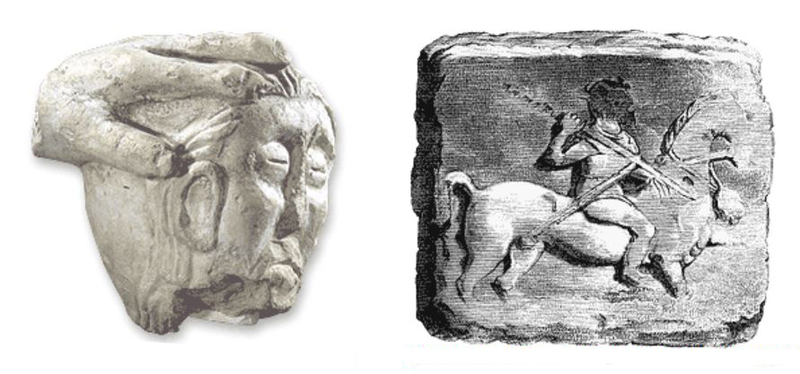- Home
- Society and power
- Human trophies
The head of a deceased person placed under a hand (of a seated hero?). The position of the head on the knee of a warrior almost certainly indicates it was one of the trophies accumulated during his life. To possess the head of one’s enemy is to appropriate part of his power.
The human heads placed in front of or on the knees of the seated heroes, and perhaps also those represented in bas-relief on the pillars, belong to deceased persons with closed eyes and blurred/slumped mouths.
The bas-relief representation of a head suspended from the neck of a horse, and those nailed to the façade of the hypostyle hall, clearly confirm the slightly later testimony of Posidonios concerning the removal of the skull of conquered enemies in the field of battle, their value as trophies and their display on the doors of collective buildings.
Human bones and sculpted heads placed under the hands of heroes from Entremont have contributed for over a century to a debate concerning two parallel practices with different underlying concepts:
- The removal by war chiefs of the heads of their vanquished enemies as evidence of their bravery when brought back to their estate or collective habitat, “as if they had conquered proud animals with a few blows.” (Diodore, V, 29);
- The ritualized preservation of the heads of certain deceased members of the social group, or part of their cranial bones for the creation of reliquaries in the form of a more or less realistic mask modeled from clay and painted.
Current research emphasizes the conjunction of these two practices in the belief of a superior spirit contained in the human head.
The greatest difficulty lies in interpreting the human heads without necks and with closed eyes figured in bas-relief on pillars and lintels. Many of these images are attributable to allusions to the manes of ancestors. Indeed, it is the natural skulls that attest to the bravery of warriors, rather than their sculpted simulacra that are no more than simple evocations. The systematic use of the term “decapitated heads”, rather than “funeral masks”, is an abuse of terminology that carries significant implications.
